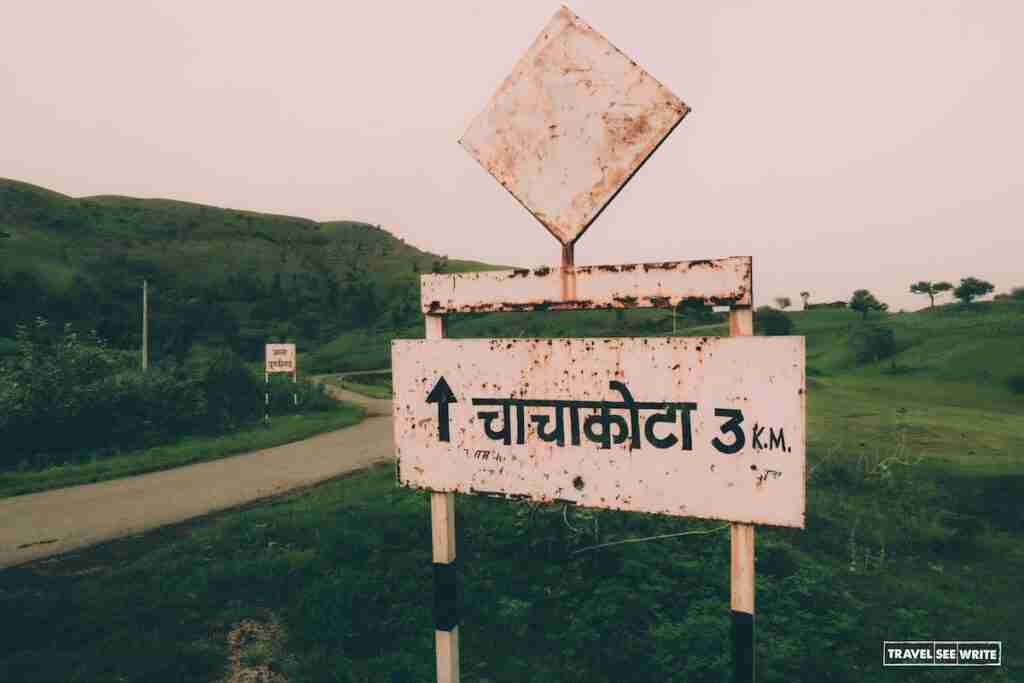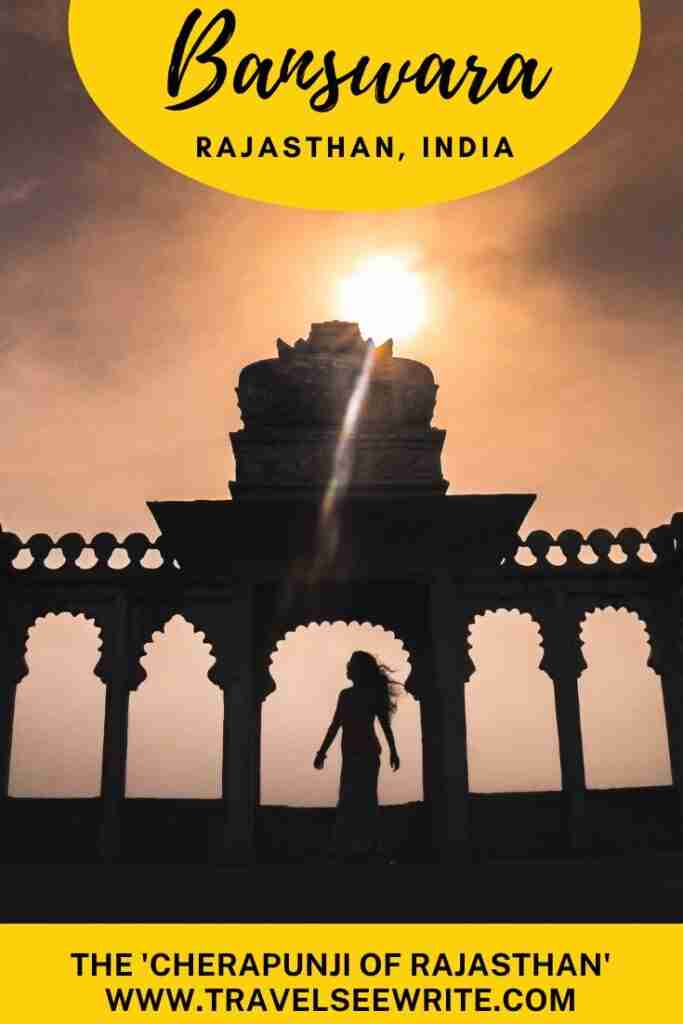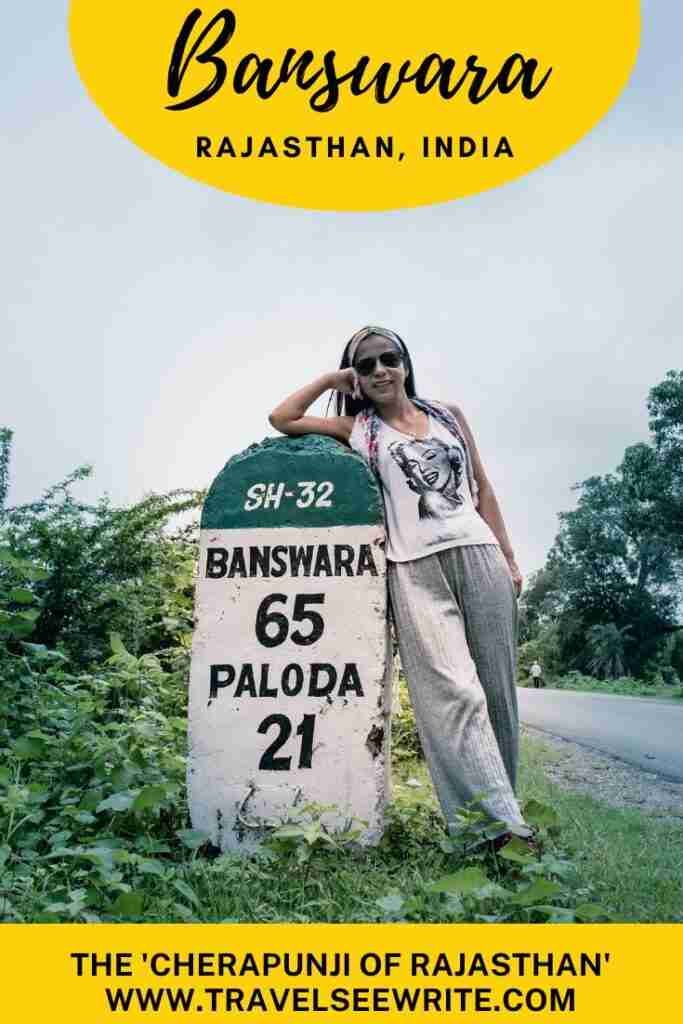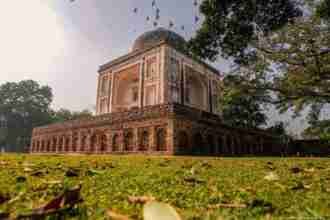Tired of visiting touristy places and want to explore off the beaten track in Rajasthan? Visit Banswara – an oasis in a desert.
There is an area of Rajasthan that is little-known and even less visited. Deep in the southern side of the state, surrounded by the Aravalli Hills and Mahi Dam, lies the tribal district of Rajasthan – Banswara. If one was to judge the place based on pictures, Banswara could have been mistaken for the North Eastern state of Meghalaya or the Lake District of England. Until I saw it myself, I, too, couldn’t believe a city of hundred islands could exist in a desert state.
What separates Banswara from the rest of the state is the amount of rainfall it receives annually. As compared to Jaisalmer that gets an average of 146.88 mm rainfall annually, Banswara receives 900mm. As a result, when the rest of Rajasthan reels under drought conditions, Banswara stays lush green and brimming with water. Quite fittingly, Banswara has earned the nickname of ‘Cherrapunji of Rajasthan’ due to receiving the highest rain in Rajasthan and is also called the greenest city of the state. However, the nickname that stood out the best for me was the ‘City of Hundred Islands’ because of the hundred small islands on the River Mahi, which flows through the region. Let me take you on a virtual voyage of this hidden gem of Rajasthan.
The Journey from Udaipur to Banswara
Some 165 km from Udaipur lies the Banswara district. The four-hour road journey was comfortable and brought alive the joy of road trips. It would have been a crime to go on a road trip and not enjoy the kadak Dhaba chai with piping hot kachori. So, my first pit stop came relatively early, just 20 km from Udaipur, when we stopped at a local tea stall, ‘Kewada Ki Naal’. The humble tea stall has gained popularity among locals for the special tea made from locally grown herbs, mainly lemongrass. The Tea stall has been there for 15 years, and a father and son duo runs it.
https://www.instagram.com/reel/CSyIgqSCLqm/
On the way, we passed through tiny villages, gingerly flowing river tributaries, ponds blooming with water lilies, and tribal groups herding their cattle. Although I enjoyed the countryside scenery and cool breeze, I felt a bit hungry when I saw villagers gorging on freshly prepared local snacks. Gluttony took over me, and I gulped down two plates of Dahi-kachori and samosa chaat before reaching my guest house.
Exploring the City of 100 Islands
I was inquisitive to know why Banswara got such a unique name, so after a quick lunch, I was off to explore one of the most stunning parts of Banswara – Chachakota. As we approached our destination, my local guide shared how the district got its name. He said there are two famous legends. One says it was named after King Bansiya, the ruler of the Bheel clan, who established Banswara on the day of Makar Sankranti on 14 January 1515 AD. The other theory credits the bamboo trees (known as bans in Hindi) that once grew here in abundance. Banswara literarily means ‘Land of Bamboos’ in English.
As we drove on the serpentine road passing through rolling green hills, the pint-size villages with mud houses kept popping up here and there. Inhabited by Bhil tribals (popularly known as the bowmen of Rajasthan), this place was so remote that there was no other vehicle in sight, and it felt as if we had gone past a few centuries. Our car wasn’t driven on the road but was flying through misty cotton candy clouds.


We reached a point where you could see the panoramic view of the entire Chachakota, but the whole area was enveloped in a mist. As I walked out of the car, suddenly it started pouring heavily, and I had to take refuge in a humble tarp of a village boy. Initially, the boy was too shy to speak, but slowly he opened up. We talked about his school, family, life, and a lot more. His innocence made him look as if he was from a parallel universe, utterly oblivious to the perils of social media and PUBGs of the world. After half an hour rain stopped to let the sun take centre stage. Along with it came the hens, roosters and goats. I could finally see the beauty of the place.
A cold breeze was blowing, and clouds were hanging low. For a moment I felt as if I was at some hill station in the Himalayas. There was a huge water body around me – the backside of Mahi Dam – where some boats were docked. I was surprised how a place this beautiful was still not on the tourist map.
As I sat down to enjoy the view, my local guide shared how Banswara’s fertile plains are used to grow maize, wheat, rice, cotton, soya bean and gram. Known to be a mango hub of the state, around 46 varieties of mango are produced here. Out of which 18 are indigenous. The region is rich in teak forests, khajur (date), and mahua trees besides mango trees. The tribal area is said to be the home of wild animals like leopard, and chinkara (Indian gazelle), choosing (four-horned antelope), Sambhar (Asiatic deer), wild boar (Susscrofa cristatus) and cheetal (spotted deer). For bird lovers, there are Jungle crows (Corvus macrorhynchos), red vented bulbul (Pycnonotus (cafer), myna (Acridotheres tristis), red spurfowl and black drongo (Dicrusrus adsimilus), grey shrike, green bee-eater, parrot, house sparrow, purple sunbird (Nectarina asiastica), woodpecker, and the white-spotted fantail. I spent a few hours meeting the locals and enjoying the Bhil tribal hospitality.
As the golden hour wrapped a hundred islands in its golden glow, we returned to our guest house. While returning from Chacha Kota, we stopped near Bai Talab Lake to see the rare species of 350-year-old Kalpa Virksha trees. Usually found in a pair as male and female, this sacred pair of divine trees are revered for fulfilling people’s wishes. There are very rare, and some say there are only 10 pairs left in India.
Adventure in Banswara – Ziplining and waterfall chasing
The next day started with an adrenaline rush at Kagdi Pick up point located on Ratlam Road, 3 kilometres from the central part. While there was a lot to see and do, I was most excited to do zip lining on the calm waters of Kagdi lake at Thrill Adventure Zone. The park overlooking Kagdi Lake is part of the Mahi Bajaj Sagar project. It has many charming fountains, walkways for daily joggers, gardens, a play area for kids and leisure activities like boating.
Kagdi Fall was just a few kilometres from the park, but we decided to visit another waterfall that’s very popular among locals for picnics – Kadeliya waterfall. Usually, the water level is shallow, but in monsoon, this waterfall’s beauty increases manifold.
The rest of the day was spent chasing more waterfalls and visiting naturally gifted places like Jagmeru Hills and Singapura. With beautiful water bodies, hillocks, a forest, and greenery all around, Banswara offers a much-needed break from the regular holiday spots. It’s quite a miracle like a place – an oasis in the desert. Where else can you find so much greenery as in Banswara?
Following the footsteps of Roothi Rani
After two eventful days in Banswara (which were clearly insufficient), I started my return journey to Udaipur. However, I took a detour to follow the footsteps of Roothi Rani before arriving at the city of Lakes. Some 200 km from Banswara, I took the road to Jaisamand Lake (Dhebar Lake). The Lake is renowned for being the Second Largest Artificial Lake in Asia. Spread over an area of 36 square miles (93 square km) the lake is 102 feet deep and has three islands. On the northern end of Lake are the two summer palaces of Rana Jai Singh – Hawa Mahal and Roothi Rani ka Mahal. Legend says that the youngest queen, Kamladevi, got angry with the King and left the palace to live in a forest. In a bid to appease his angry wife, Maharana Jai Singh built this palace surrounded by a lake on all four sides. And, thus this palace came to be known as Roothi Rani Ka Mahal. The palace was in a dilatated stage, but the sweeping views of the Lake and islands took my breath away. One has to walk 2.5 km from the Jaisamand Lake entrance to reach here and cannot stay here beyond 4:30 pm as many leopards, and other wildlife animals have been spotted here.
Banswara and Jaisamand Lake make for a great escape from the bustling crowds of urban life. So when are you visiting these offbeat gems of Rajasthan?
How to reach Banswara
Visiting Banswara, the greenest city of Rajasthan, is fairly easy.
- By air: The closest airport is Udaipur Airport which is 185 km away.
- By road – Buses or taxis are available from Delhi, Jaipur and Bharatpur to Banswara. I took a cab from Udaipur to Banswara and took roughly 3 hours to reach.
- By train – The nearest railway station is Ratlam, which is 80 km away from Banswara.
Banswara Places to visit
- Nature – Chachakota, Jagmeru Hills, Singpura and Mahi dam
- Adventure – Kagdi Pick-up Weir for Ziplining, and boating, Singapura for paragliding
- Lakes – Anand Sagar Lake (Bai Lake), Dailab Lake
- Religious sites – Tripura Sundari temple, Madereshwar temple, Mangarh (the Jallianwala Bagh of Rajasthan) and Abdula Pir shrine
- Heritage – Arihuna temple ruins and Talwara ruins
Where to Stay – Banswara Hotels
Being an offbeat place whose tourist potential has not yet been realised, there are only budget accommodations available in Banswara. You can stay at hotels like Kushalbagh, Surya Palace, Amardeep Palace or a Government-run Circuit House.
My Trip To Rajasthan vlog
Related posts
Visiting Banswara, the greenest city of Rajasthan was one great experience. Along with Banswara, you can visit more places like Udaipur, Kumbhalgarh Fort and many more nearby places. Here are some posts that you may find useful in planning your trip to Udaipur and other nearby places.
The best places to visit in Udaipur in 24 hrs to 7 days
Is Ambrai worth the hype? Here are the 10 best restaurants in Udaipur
Why Tree of Life Vantara Resort is one of the Best Hotels in Udaipur?
Rethinking tourism could save Udaipur from its pressures
HOW TOURISM SAVED THE ROYALTY OF RAJASTHAN
Welcome to the Circus – Ranthambore Jungle Safari, India
Pin these
Sharing is caring. If you liked the post, please consider pinning these to your pinboards.
Disclaimer
I was invited by Rajasthan Tourism to explore the state. However, like always, all the views expressed and pictures clicked are mine. Please do not copy anything without my written permission.


























Nice
thanks
Hi can you please share the guide contact details.
When did u visit the place in mean which month ?
I went there in August.
I heard the fact of Bansara GREEN CITY AND OTHER FACTS RECENTLY FROM AN ELECTION SPEECH OF BJP i DONOT KNOW WHETHER THE COMMUNAL AND POLITICAL STATEMENTS ABOUT SOMECOOMMUNIIES ARE RIGHT OR WRONG. BUT THE MENTION OF BANSWARA GREEN CITY IS GOOD INFORMATION. people OF Rajasthan IS FULL OF DESERTS AND LACK OF RAINS. NEARBY GUJARATIES HIGHLY TRAVELLING FOR COMMERCIAL AND HOLIDAY TRIPS.YOU CAN MAKE IT LIKE UDAIPUR YOU CAN GOOD REVENUE FROM DEVELOPING THIS AS A HOLIDAY AND TRAVEL RESORT.. NEARBY CONSTRUCT A CITY FOR RETIRED SENIOR CITIZENS.